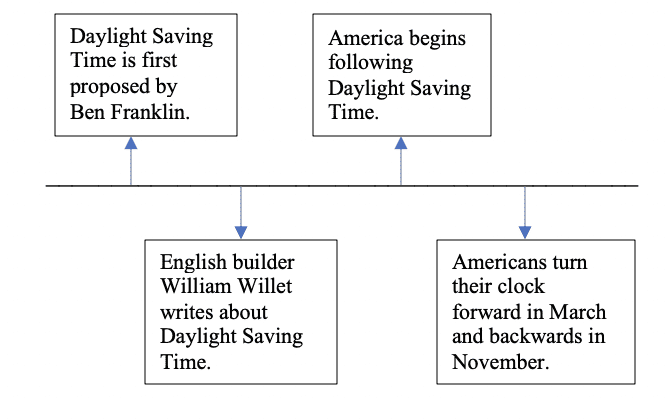The author identifies the starting point of her research project when she writes “My search had begun in libraries and archives—repositories of conventional history” (lines 36-37). In these places, she discovered that the “available sources were to be found in census reports, church records, directories, and other such statistical information” (lines 37-39). These sources all share the characteristic of being written public materials.
The “census reports, church records and directories” (line 38) are representative of the “available sources” (line 37) that the author finds inadequate specifically because they “cannot provide one of the essential dimensions of history, the full narrative of the human experience” (lines 40-42). That is, they do not tell the human side of the story.
The “gap” (line 43) is discussed in the context of written sources and the pictures of life they represent. The author discovered that fact-based conventional records lacked “one of the essential dimensions of history, the full narrative of the human experience” (lines 40-42). She suggests that “diaries, memoirs, and letters” (lines 43-44), which are included in the category of “personal written sources” (lines 48-49), would present that other viewpoint. The “gap” lies between these two types of sources.
A "role" is the position or the expected social behavior of an individual. When the author writes "I was initially unsure of my place" (lines 58-59), she is expressing uncertainty about how she should think of herself and about how she is perceived by doña Teodora and other Mexicana interviewees. In this context, "place" refers to her social "role." This is made clear in the subsequent text, when she wonders if, despite speaking Spanish and being Mexicana, she is an "insider" (line 59) or an "outsider" (line 62).
The author acknowledges that she is connected to doña Teodora and other Mexicana interviewees through their shared ethnicity and language. She writes, "I could speak Spanish and am Mexicana" (line 61). Yet the author wonders if she was "still an outsider" (line 62). The fact that she raises this question suggests that sharing these common bonds might not be enough to make her an insider.
The author suggests that the spoken word can provide greater insight than the existing theories and models that are “derived solely from victorious imperialistic experiences” (lines 66-67). These presently accepted theories and models are considered problematic by the author because they were developed without the insights of the Mexican people. She argues that “theoretical constructs must follow the voices of the people who live the reality” (lines 74-75).
Lines 69-70 suggest that the “concepts” will originate in the “new sources” (line 68), which, the passage implies, are the oral histories and personal written sources of ordinary people. These new sources of information “will determine which concepts are needed to illuminate and interpret the past, and these concepts will emerge from the people themselves” (lines 69-71).
Advertisement
Explanation:
The author explicitly states that although Ben Franklin may have been the first to advocate the practice, America's use of Daylight Saving Time did not derive from Franklin's proposal, making answer choice (B) valid. The article directly refutes the other response options.
Explanation:
Answer option (D) is appropriate since the author makes a point of highlighting how peculiar Daylight Savings Time is in the opening paragraph. It may be tempting to choose option (A), however the author never refers to this practice as a "problem" or makes an effort to provide a "solution."
Explanation:
Since "where anything initially originated" is the definition of inception, answer option (A) is correct. The author of the article mentions that Daylight Saving Time was first used in America one hundred years ago. Although it may be tempting, answer choice (B) does not indicate that Daylight Saving Time was changed in 1918; rather, it indicates that America started observing it.

Explanation:
The right response is (A), as it adheres to the timetable covered in Paragraph 2. Although it was Ben Franklin who first proposed the notion, it wasn't until the early 20th century that Europe followed suit. The United States followed suit in 1918, and we have now observed Daylight Saving Time for a century.
Explanation:
The author clarifies Daylight Saving Time for readers and concludes by suggesting that it won't be changed anytime soon because people like it. Therefore, answer choice (B) is correct. Nothing in the text suggests that the author intends to put an end to it (A) or that farmers need it (C). The author doesn't advocate Daylight Saving Time as a method to memorialize Ben Franklin, despite the fact that some people may think it is (D).
Explanation:
The article's main idea—that we observe Daylight Saving Time because we prefer having extra sunlight throughout the summer—is only partially captured by answer choice (C). Though it might be true, answer option (B) is not the article's major point.
Explanation:
Answer Choice 1 is the only quote that shows that the author thinks Daylight Savings Time will continue (A). None of the other options support the answer to Part A.
Advertisement
Explanation:
The author presents Daylight Savings Time at the beginning of the essay, delves into its history, and comes to a conclusion about it at the end. Therefore, answer choice (C) is accurate. The author does detail the chronological background of the practice, which makes answer option (D) alluring. However, this is only a small portion of the essay and does not accurately represent its general organization.
Explanation:
The answer choice (D) is accurate since the author introduces the issue at the beginning of the piece before gradually coming to the conclusion that certain monuments honoring villains should be demolished in the United States.